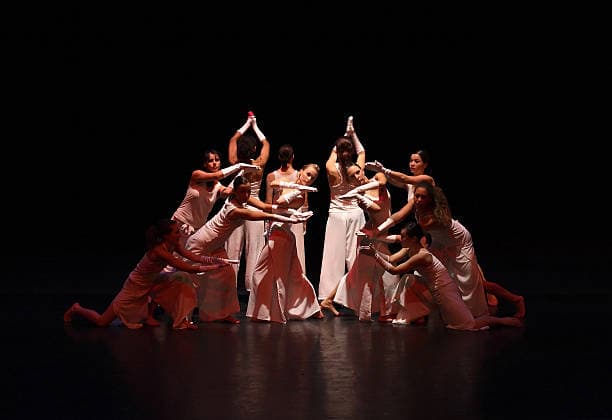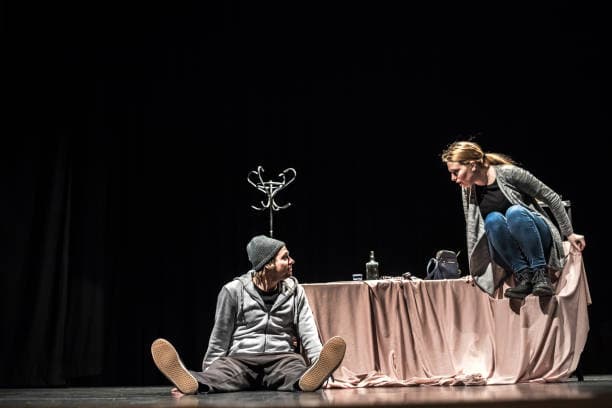In the exciting and multifaceted world of theater art, where every gesture and spoken word takes on deep meaning, the process of character creation stands apart, representing a unique fusion of acting skill, psychological insight and creative intuition. Time and effort are necessary for this amazing idea to fully realized image on stage, but it also takes an unquenchable curiosity about human nature and all of its incarnations.. Take a fascinating trip with us as we explore the various stages of a theatrical character’s evolution, from its conception in the actor’s mind to the point at which it comes to life on stage and inspires a surge of admiration from the audience.
Inception of an idea
The first and most important step in creating a theatrical character is coming up with the idea. The image’s further development and its on-stage manifestation are determined during this first phase. Let’s take a closer look at the key points of this stage.
Initial introduction to the role
- Studying the text of the play
Studying the play’s text in great detail is the first step an actor takes to develop a character. This is more than just reading; it’s an investigative study where the performer looks for hints and secrets to help him comprehend his persona, goals, aspirations, and anxieties. A character’s every phrase, sentence, silence, and unsaid thoughts can all reveal a wealth of information about them. Because the character’s essence is hidden in the details, this procedure calls for focus and the ability to read between the lines.
- Discussion with the director
Once the initial immersion in the text of the play has taken place, the next step is to discuss the character with the director. This stage is extremely important because it allows the actor’s and director’s vision to be synchronized, to discuss ideas and concepts that can be used to further develop the character. The director can offer a unique interpretation of the character or the play as a whole, which will open new horizons for the actor’s performance. At this point, developing a cohesive and compelling persona is mostly dependent on mutual understanding and cooperation.
Study of context
- Study of the future atmosphere
To understand the environment in which the character will be placed is very important for his perfect realization. Assessing the historical, societal, and cultural context helps the actor’s ability to “dive” deeply into the play’s universe. Knowledge of historical realities, customs and traditions of the time in which the character lives, allows the actor to more accurately convey his manners, speech, worldview. This stage requires a broad outlook and a willingness to immerse oneself in the study of new materials.
- Analyzing a character’s biography
Another important component of research work is the analysis of a character’s biography. Even if the life of the character is not described in detail in the text of the play, the actor can (and should) imagine it, make assumptions about the key events that shape the character and behavior of his hero. Where does he come from? What are his family relationships? Have there been tragedies or significant happy events in his life? How have these events influenced his attitudes and actions? The answers to these questions help to create a multi-layered and convincing character that will be alive and fully realized on stage.
To know the depths
The actor proceeds to a more profound and intense level of preparation known as “deep immersion” after laying the foundation for character development through text and situation study. This phase includes both exterior and internal metamorphosis, enabling the performer to fully inhabit their role on stage.
Establishing the character’s internal world
- Working on motivation
To truly understand a character, one must understand his or her motivations. The actor must ask themselves the questions: “What does my character want?” and “Why does he act this way?”. Finding the answers to these questions reveals the character’s concerns, objectives, wants, and motives. This work requires the actor to deeply analyze the text and the character, as well as the ability to empathize and sympathize. An actor may portray a character more compellingly and realistically if they understand the motivations behind the character’s actions and reactions.
- The Evolution of Feelings
Character creation also involves expanding a character’s emotional horizons. The actor explores and embraces the experiences and feelings of the character through speech, movements, and facial expressions. An emotionally complex persona that the viewer can relate to is created with the help of this work. An actor must possess both technical proficiency and the capacity to go deeply into the character’s past in order for his emotions to organically flow from his inner world in order to establish an emotional background.

Physical embodiment
- Work on facial gestures
Developing the character’s “body language” is the first stage on the way to his or her bodily embodiment. The artist practices facial expressions, gestures and basic motor skills, trying to embody the character’s personality and mental state to the maximum extent possible. This process could entail experimenting with space and interacting with other actors on stage, as well as picking up certain mannerisms or gestures unique to the role. Developing a distinctive physical persona for a character improves their on-stage presence and helps the audience comprehend them better.
- Voice and Diction
Another crucial component of a character’s physical embodiment is their speech and diction. The actor selects vocal features appropriate to the character, including tone, tempo, intonation, and accents if necessary for the role. Voice work requires the actor to understand how a character’s emotional state and psychological characteristics affect the way he or she speaks. For example, nervousness may be expressed in higher tones and faster speech, while confidence may give the voice depth and calmness.
Working out relationships
In the phase of exploring character dynamics, performers are engaged in analyzing the connections between their roles, which is integral to the process of penetrating the complexity of the narrative and enhancing the overall impact of the performance. Through this exploration, actors unearth underlying motives, tensions, and interactions that fundamentally shape the way characters relate to one another, influencing the trajectory of the plot. Rehearsal periods provide the perfect arena for actors to refine these interactions, allowing them to experiment with various emotional shades and reactions their characters might display in response to others’ words and deeds. Such meticulous work on character interplay not only enriches the portrayal of relationships on stage, making the story more relatable and absorbing for the audience, but also fosters more nuanced character portrayals.
Final touches
During the preparation phase of a performance, performers and directors mostly concentrate on the final touches, which include stage presence and the construction of the characters’ visual identities. By figuring out the stage area, performers can not only become accustomed to the actual area but also learn how to make the most of its potential to disclose deeper aspects of their characters, establish a specific mood, and heighten the drama in the performance. Because they enable actors to fully embrace the role and transmit to the audience important facts about the character, such as his character, emotional state, and social status, cosmetics and clothing are equally important. Choosing your stage appearance carefully is essential to projecting a distinctive and compelling impression.
The feedback and improvement phase of the performance begins once every element is prepared. Previews serve as an important opportunity to get feedback from both the audience and fellow actors. This process provides essential feedback that may reveal non-obvious moments or aspects of the play that need to be refined. The actors and director can use this information to adjust role details, improve onstage interactions, or make changes to the visual component of the performance. This final stage of preparation is key to polishing the play to perfection, making it ready to premiere and present to the public.
Stage debut
A long period of preparation culminates in an actor’s first public performance, which is the culmination of months of study and rehearsing. This is their chance to not only demonstrate their abilities but also give the character life by bringing to life all the feelings, inspirations, and goals they have strived so hard to realize. Each show varies due to the spontaneous nature of audience interaction, ensuring a distinct experience for every viewer as they process and perceive the unfolding story uniquely. Actors draw upon the atmosphere, input, and emotions of the audience to refine and intensify their depiction. Such engagement with viewers allows thespians to embody their characters with greater authenticity, lending a more genuine vitality to their roles.
Following a stage debut, an equally significant process of self-reflection and ongoing growth starts. Every show offers participants fresh insights and opportunities for personal development. They are constantly working on themselves, trying new approaches and techniques to reveal more about their characters, making acting a never-ending path to excellence. Besides fostering the individual evolution of the performer, this continuous journey towards enlightenment and self-improvement also contributes to the broader progression of the theatrical arts, introducing innovative viewpoints and novel modes of expression that enrich the audience’s experience with more layered and diverse performances.
